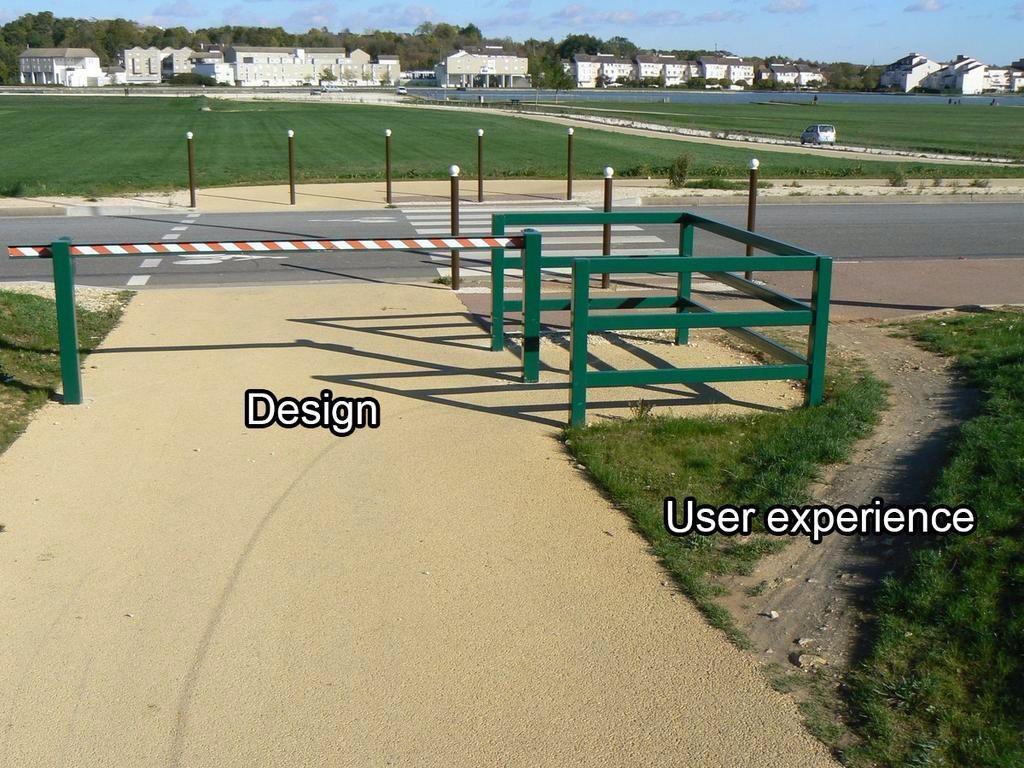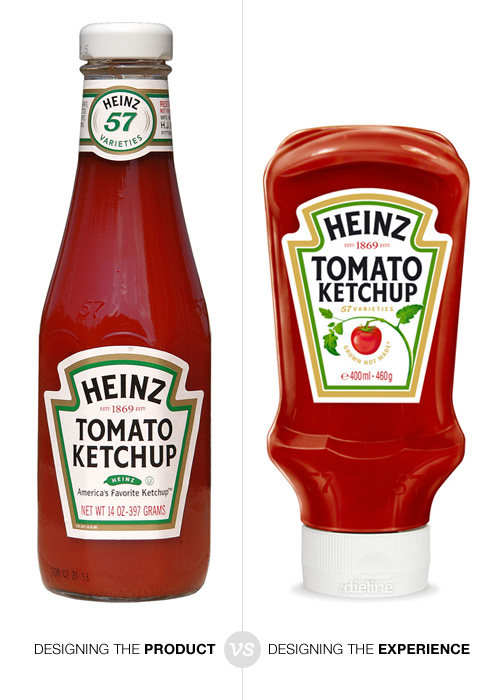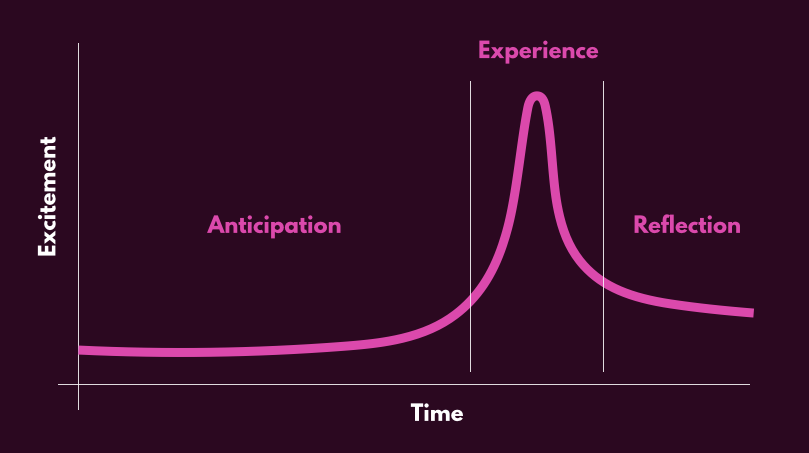Experiences! or: How to Build Roller Coasters
There’s over a billion websites live today. Over a billion blogs, shops, news pages, micro sites, social networks, web apps and startups. Over a billion websites — and the question: how can we stand out?
Designing compelling and attractive User Experiences is the key for the web today. No startup without a UI/UX Designer, no website without proper UX. But what does that exactly mean?
So I set out to look up what User Experience Design is. I asked the internet. If you ask the internet what user experiences mean, you will find this image:

So, User Experience is what happens if people ignore the designed path and just bypass it, right? It’s the people’s actions, not the designer’s intention. Really?
But there’s more. Here is another example that I came across:

User Experiences are the plastic bottle, not the glass bottle. It’s having the lid on the bottom, not the top. It’s the ability to squeeze for content, rather than shaking and using a long latte spoon. None of this is wrong, but: That’s just ketchup!
If you want, you’ll find a ton of weird and shitty analogies for what user experience design is, and none of them take into account the core of UX Design: Experiences.
There’s all kinds of experiences, spontaneous and planned experiences, traumatic and enlightening ones.
WARNING! Watch at your own risk, might cause a traumatic experience.
This tv commercial from the early 2000s is the perfect example for a certain kind of experience, a traumatic one (Watch it at your own risk). Something you will remember, but not in a positive sense. In User Experience Design, it’s not about scaring people. It’s not about things that just happen, it is about creating experiences. It’s about designing experiences.
How do you design an experience?

Let’s look at a really simple example: A roller coaster ride. Before you can hop on the cart, you will have to wait in line for 1–3 hours. You will get bored. You will get hungry. You will get cold. You will get anxious, the closer you get to the entrance and the louder the screams get. But there’s no turning back: You will get in.
The safety loops go down and fixate you on your seats, and off you go: the slow climbing, the moment when you reach the highest point, the weird feeling in your stomach, the g-forces, the screams. You will experience everything! For like 90 seconds or so, and after that, the ride is done. You will get out, totally psyched. You’ll buy a photo of you with a funny screaming face, you will tell everyone you know about this.
That’s what I call an experience.
Real experiences come in three phases: The anticipation phase, the experience phase and the reflection phase.
During the anticipation phase, you are preparing for experience. you’ll be waiting for it, you’ll be looking forward to it. It’s line at the Apple Store on iPhone day, the online tracking for your Amazon delivery, the countdown before New Years, the rotating popcorn bag in the microwave. Anticipation is important for experiences: It gives us the ability to get in the right mood for the actual experience, it prepares us and gives the experiences more space.
The experience phase is what we consider to be the actual experience. It’s the first bite of hot popcorn, the moment we turn on our new Apple device, the first kiss in the new year. The experience phase might be really short, but it’s what we will remember later.
The reflection phase is probably the most important phase: It’s the time after the experience, in which we relive, retell and reflect what just happened. It’s the release of endorphins after having sex, all the times you brag about how awesome jet black as a color is, the story you will tell your kids years after the roller coaster ride.

An experience can only live because of what’s coming right before and after it. Experiences need to be awaited and reflected on. This is how experiences work.
Jonathan Bree works as a designer LEGO in Denmark — yes, the same LEGO that we loved as kids (and still do) and cursed and hated as parents, when you stepped on one of the sharp-edged little pieces in the middle of the night. In his article on 5 Things I Learned he describes a really cool design tool that utilises the experience phases and maps the user’s mood before, during and after the experience. This can really help to identify — no pun intended — pain points and make sure to deliver the best possible user experience.
Nicolas Duval from BlaBlaCar uses Lego to advocate on a different aspect of design: In his article «Stop designing interfaces, Start designing experiences» he describes how establishing a predefined system of interface components helped them to think less about the looks of their interface and more about the actual flow, the actual user experience.
But why are experiences so crucial to design?
“We do not learn from experiences, we learn from reflecting on experiences” — John Dewey.
American Psychologist John Dewey described experiences as an important part of how we learn in his 1938 book “Experience and Education”. More importantly, he formulated the theory that experiences need the reflection phase to be remembered as experiences and count as learning experiences. His phase description consisted of 4 phases: Act, Reflect, Conceptualize, Apply.
The web today is made of experiences. It is our duty as designers to create, to design great experiences. User Experience Design or UX Design should not be about getting this form right, it should not (only) be about fixing that on-boarding funnel, it should not be about ketchup bottles or cross roads. User Experience Design should be about creating learning experiences. It should be about building roller coasters. It should be about making the web a better place.
What’s your take on experiences? How do you do User Experience Design, what is important for you? I want hear from you in a reply or let me know on Twitter: http://twitter.com/johannesippen/
This article is based on a Creative Mornings Talk from November 2016 and the book “Web Fatale”.